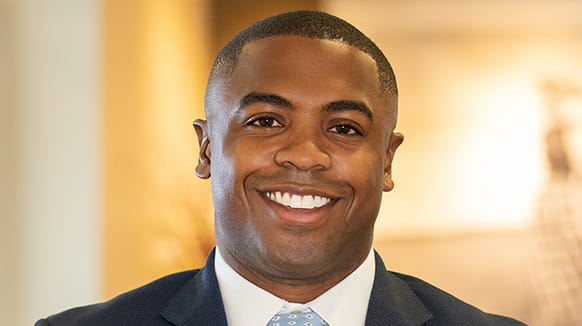The Media and Entertainment Practice Group of Haynes and Boone, LLP represents a broad range of clients in all facets of media and entertainment, intellectual property, open government and First Amendment litigation, counseling and legislative matters.
View the full version of the June 2023 Media, Entertainment and First Amendment Newsletter.
Is This the Real Deal? Legal Issues Around Artificial Intelligence in Entertainment Transactions
“Is this the real deal?” That’s a question many people are asking about the technological advances changing the way we do business and go about our daily lives. It’s a question we’ll continue to ask as new tech develops at break-neck speed.
Lessons Learned Series: Making Strides Towards UK Anti-SLAPP Law and Crackdown on Attorneys Who Bring SLAPP Suits
In recent years, the European Union and United Kingdom governments have become more attuned to the significant harm SLAPP suits cause to human rights and the rule of law. With the issuance of the EU Model Anti-SLAPP law by the European Commission on April 27, 2022, the continent appears poised to address this unique form of judicial harassment with legislation by 2023-24. Additionally, between the war in Ukraine and the unabashed use of the London court system by Russian oligarchs determined to punish anyone (British citizen or not) who speaks the truth about their ties to Russian President Vladimir Putin or corruption, the UK has also decided to prioritize addressing this affront to the rule of law with Anti-SLAPP legislation and holding lawyers to account.
Arizona Supreme Court: Commentary by Radio Talk Show Host about U.S. Congressional Candidate Protected from Defamation Claim
A two-year defamation case reached a fitting end in April as the Arizona Supreme Court held that political statements made about a political candidate’s conduct at a political rally were protected as opinion and political speech. In a 13-page opinion, a unanimous Arizona Supreme Court dismissed the suit with prejudice and held that the nine statements at issue were not actionable in light of “each statement's content, the overall context, and the protections afforded to core political speech by the First Amendment.” Harris v. Warner, No. CV-21-0242-PR, 2023 WL 2941654, at *1 (Ariz. Apr. 14, 2023). The nine statements can be found below within their context.
Haynes Boone Fights for Transparency in Uvalde
More than a year after the killing of 19 students and 2 teachers at Robb Elementary School in Uvalde, Texas, attorneys from Haynes Boone continue to fight for the release of public information related to the tragedy.
In the weeks after the shooting, Haynes Boone partner Laura Prather organized a coalition of 17 media organizations whose requests for information about the events at Robb Elementary have been denied by state and local agencies. These agencies have refused to release information that could shed light on what happened that day, including records related to the school, the shooter, and the law enforcement response.
U.S. Supreme Court Finds Andy Warhol’s Use Of Prince Photograph Infringing, Provides Guidance on First Fair Use Factor
In a copyright case closely watched by content creators, the U.S. Supreme Court held, 7-2, that the first fair use factor— “the purpose and character of the use” — weighed against Andy Warhol’s use of Lynn Goldsmith’s black-and-white photograph of Prince to create a colorful silk-screen illustration of the musician that was later licensed to Vanity Fair without Goldsmith’s consent. Justice Sonia Sotomayor, writing for the majority, first explained that courts analyzing the first fair use factor should balance “the degree to which the use has a further purpose or different character” against the “nature of the use,” whether commercial or nonprofit. Under that rubric, the Court next found that even though Warhol’s illustration “adds new expression to Goldsmith’s photograph,” the first fair use factor favored Goldsmith because the works shared “substantially the same commercial purpose”— Goldsmith’s photograph and Warhol’s illustration were both “portraits of Prince used to depict Prince in magazine stories about Prince.” In essence: If an original work and secondary use share the same or highly similar purposes, and the secondary use is commercial, the first fair use factor is likely to weigh against fair use, absent some other justification for copying.
NCAA Issues First NIL-Era Penalties for Recruiting Violations
On Feb. 24, 2023, the National Collegiate Athletic Association (“NCAA”) issued the first-ever penalties for violations of NCAA rules against university involvement with name, image and likeness (“NIL”) opportunities for prospective student-athletes. The University of Miami reached a negotiated resolution covering alleged impermissible recruiting contact, violations of publicity legislation, and failure to promote an atmosphere of compliance.
Don't let SLAPP lawsuits undermine Texans' freedom of speech (Opinion)
If you’re tweeting about a controversial issue, publishing an investigative news report or writing an online review of a local business, you could face a defamation lawsuit aimed at silencing your speech.
That lawsuit may be meritless — you are presenting truthful information or expressing your opinion without defaming anyone — but you’ll have to defend against the lawsuit anyway. That costs money. Lots of it.
Unanimous Supreme Court Finds Rogers Test Does Not Apply When Trademark Is Used as Source Identifier
On June 8, 2023, the U.S. Supreme Court issued a unanimous opinion in Jack Daniel’s Properties, Inc. v. VIP Products LLC, holding that where an alleged infringer uses a trademark to designate the source of its goods—even in part—the Rogers test does not apply. The Rogers test is intended to protect First Amendment rights and shields works of artistic expression from claims of trademark infringement unless certain exceptions are met. While the Court declined to weigh in on the merits of the Rogers test, this decision will serve to limit the application of the test to only those cases where a trademark is used solely in an artistic and expressive manner rather than to identify the source of the alleged infringer’s product.







